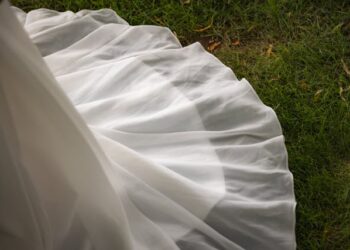Discover the history and impact of Jet Magazine Beauty of the Week pictures, celebrating Black beauty, culture, and empowerment.
Jet Magazine has long been synonymous with celebrating Black culture, beauty, and excellence. One of the standout features in this iconic publication has been its “Beauty of the Week” series, which has captivated readers with striking images of talented and beautiful Black women from all walks of life. These women, selected for their poise, confidence, and individuality, have become not just models, but symbols of representation, self-expression, and empowerment.
In this article, we’re diving deep into the history, significance, and the current legacy of the Jet Magazine Beauty of the Week pictures. We’ll explore the stories behind the featured women, the impact of these features, and how they’ve shaped the broader conversation about beauty, culture, and identity. If you’ve ever wondered about the history or evolution of the Jet Beauty of the Week, this piece will give you a comprehensive look at why these images hold such a lasting influence.
What You'll Discover:
The Origins of Jet Magazine and Its Cultural Impact
To understand the importance of the Jet Magazine Beauty of the Week, we first need to take a step back and look at the magazine’s origins. Founded by John H. Johnson in 1951, Jet was created as a magazine that spoke to African Americans and showcased the achievements, lives, and stories of Black Americans. From the start, Jet set itself apart with its bold and unapologetic focus on celebrating Black life in America.
Unlike many mainstream publications that often neglected or misrepresented Black individuals, Jet Magazine provided a platform that portrayed the full spectrum of Black beauty, talent, and culture. This made Jet a revolutionary force in the media landscape, giving African Americans a place to see themselves in a way that had been largely absent from the mainstream media.
Enter the Beauty of the Week
In 1953, Jet introduced the “Beauty of the Week” feature, which was designed to highlight a different Black woman each week, showcasing her beauty, grace, and individuality. The feature quickly became one of Jet’s most popular sections, drawing attention from readers across the country. It was more than just a photo; it was a celebration of Black womanhood.
Each week, a new woman was chosen from various walks of life—models, college students, teachers, or even everyday women. They were photographed in various poses that highlighted their natural beauty, with an emphasis on grace, elegance, and strength. The Beauty of the Week wasn’t about fitting into a mold or standard of beauty that was often dictated by society, but rather about showcasing the unique qualities that made these women stand out.
Why the Beauty of the Week Matters
While it may seem like a simple feature, the Beauty of the Week was revolutionary in its time. At the height of the civil rights movement, African American representation in media was limited and often distorted. Mainstream publications rarely featured Black women, and when they did, the portrayal was often negative or stereotypical. Jet Magazine’s commitment to showcasing real Black beauty helped to combat these harmful narratives.
The Beauty of the Week pictures gave Black women a visual platform to be seen as multifaceted, powerful, and beautiful in their own right. It was a rebellion against the Eurocentric beauty standards that dominated mainstream media and an embrace of the diverse expressions of beauty within the Black community.
These features played a critical role in shaping the self-perception of Black women during a time when racial tensions were high and social progress was slow. By celebrating Black beauty unapologetically, Jet created a new standard for what it meant to be beautiful, and more importantly, who could be considered beautiful.
The Evolution of the Beauty of the Week
As decades passed, the Beauty of the Week evolved with the times. While the feature started out showcasing women in traditional poses with classic beauty shots, as the 1970s and 1980s rolled around, there was a shift. Beauty standards were expanding, and so too was the Beauty of the Week.
In the 1970s, the rise of the Black Power movement and the growing influence of the Black is Beautiful movement had a profound impact on what it meant to be beautiful. Women began embracing their natural hair textures, and the use of afros, braids, and other natural hairstyles became more prominent. This cultural shift was reflected in the pages of Jet as the Beauty of the Week showcased a new wave of Black women who wore their natural hair proudly, signifying both cultural pride and defiance against the pressure to conform to mainstream ideals of beauty.
Throughout the 1980s and beyond, the magazine continued to feature women from all walks of life, including celebrities, artists, activists, and entrepreneurs. The Beauty of the Week series didn’t just highlight physical beauty—it showcased women who were making an impact in the world, whether through their careers, community involvement, or personal achievements.
The Impact on Modern Beauty Standards
One of the lasting impacts of the Jet Magazine Beauty of the Week feature is its role in reshaping modern beauty standards. Before the magazine’s feature, Black beauty was often underrepresented or misrepresented in mainstream media. The Beauty of the Week helped to fill this gap by providing a space where Black women were celebrated for their unique beauty, making it more visible to a wider audience.
This wasn’t just about physical features but about celebrating diversity in beauty. By featuring women of various skin tones, hair types, and body shapes, Jet pushed back against the narrow definition of beauty that was often promoted in Hollywood and fashion industries.
In today’s world, the influence of Jet’s Beauty of the Week can still be felt. Social media influencers, models, and actresses now share their beauty in ways that challenge old standards. Many of them credit Jet for creating an environment where they felt seen and validated, even before social media made it mainstream to highlight diverse beauty.
The Legacy: The Continued Relevance of the Jet Beauty of the Week
Even though Jet Magazine ceased its print publication in 2014, the legacy of its Beauty of the Week feature lives on. Through archives, social media, and the deep cultural impact it had, the images of these remarkable women continue to inspire new generations.
A resurgence of Black empowerment and self-love, coupled with the rise of platforms like Instagram and YouTube, has created a new space for Black women to celebrate their beauty. Many of today’s Black women influencers cite Jet as a pivotal force in inspiring them to embrace their uniqueness and share it with the world.
The Beauty of the Week pictures also live on through the women who were once featured. Many of them have gone on to become major figures in various industries, from fashion and beauty to entertainment and politics. Their images from Jet still hold a special place in Black culture as symbols of resilience, beauty, and grace.
Modern-Day Celebrations of Black Beauty: From Jet to Instagram
In many ways, the digital age has expanded upon the foundation that Jet laid down. The growth of social media platforms has given Black women a global stage to express themselves in ways that were not possible in the 1950s or 1960s. Yet, Jet Magazine’s Beauty of the Week remains one of the first and most powerful manifestations of celebrating Black beauty in mainstream media.
Today, Instagram influencers like @melaninqueen, @naturallytemi, and @blackandbeautifulmag have found their roots in the movement Jet started, pushing forward an inclusive narrative of beauty that embraces everything from natural hair to darker skin tones, and from bold styles to everyday looks.
Key Takings
- The Jet Magazine Beauty of the Week photos highlighted the power of representation and celebrated Black womanhood.
- These images captured cultural moments while shaping the identity of Black women in the years that followed.
- They went beyond glamour or aesthetics, celebrating individuality, diversity, and the African American experience.
- The feature gave visibility to women who might otherwise have been overlooked or underestimated.





